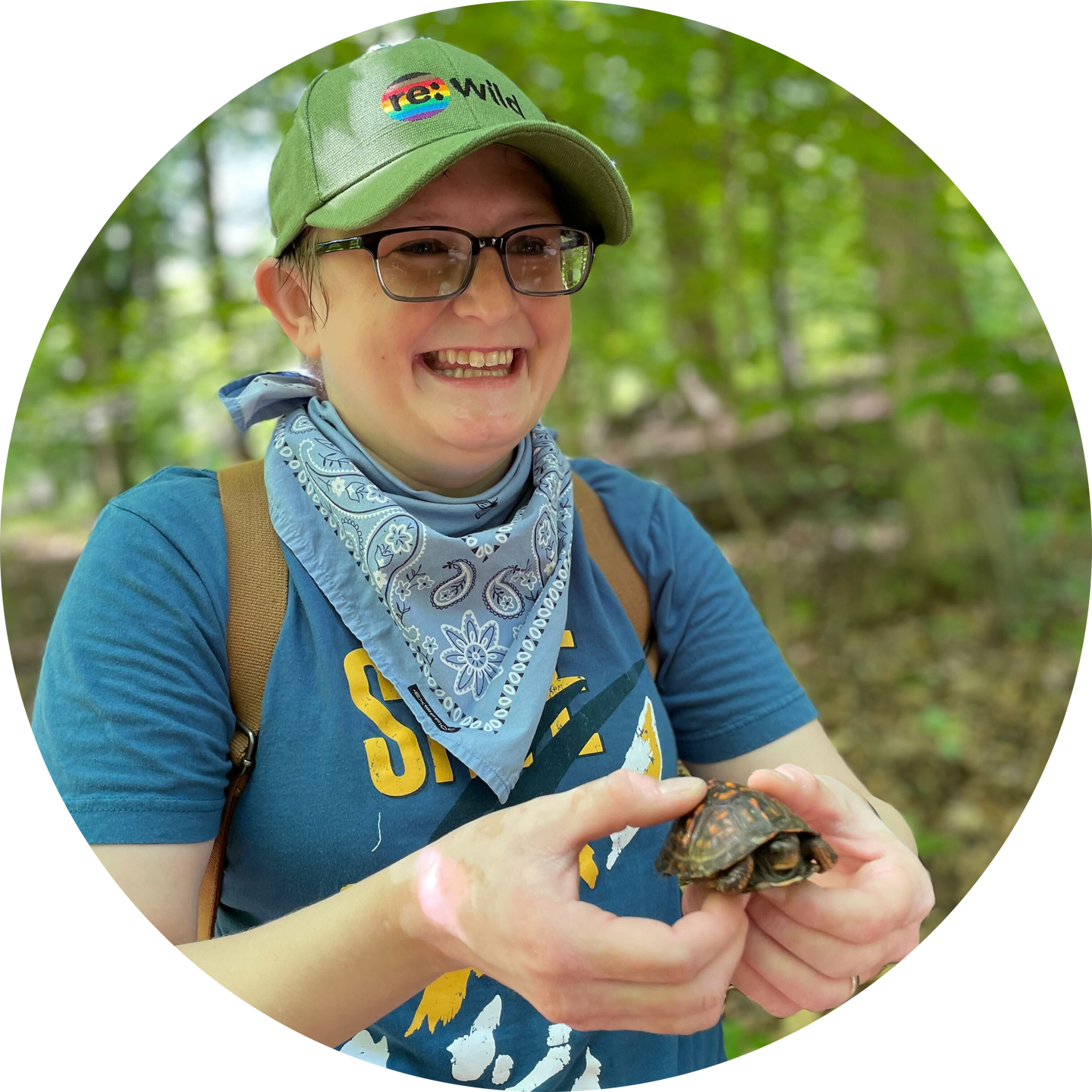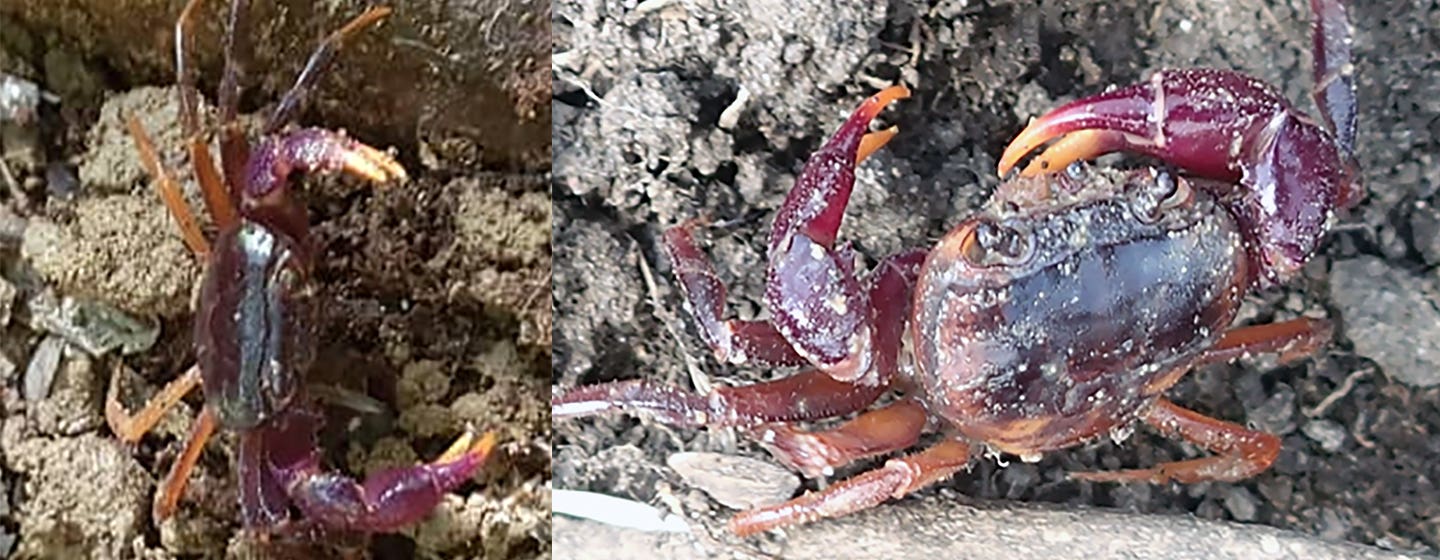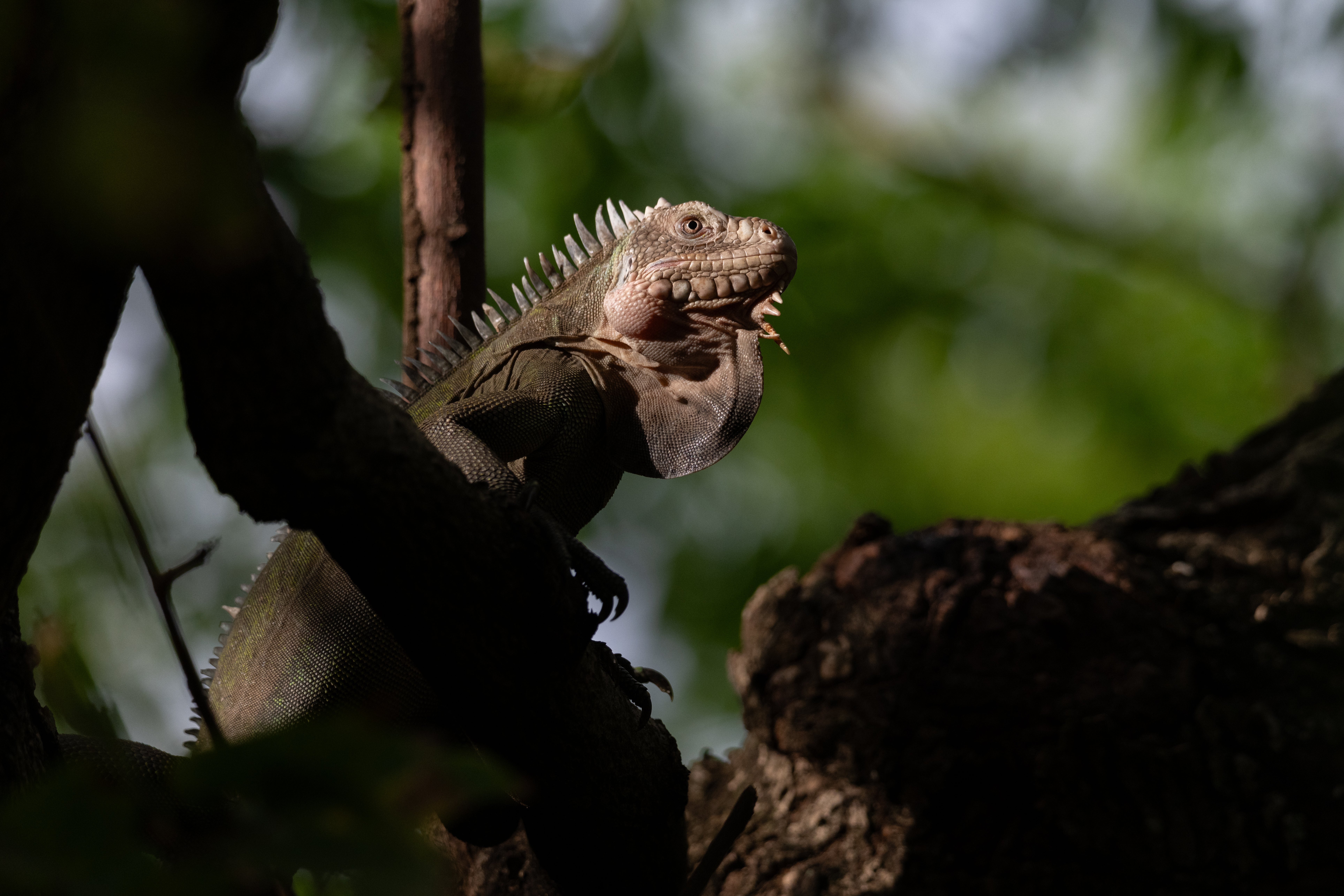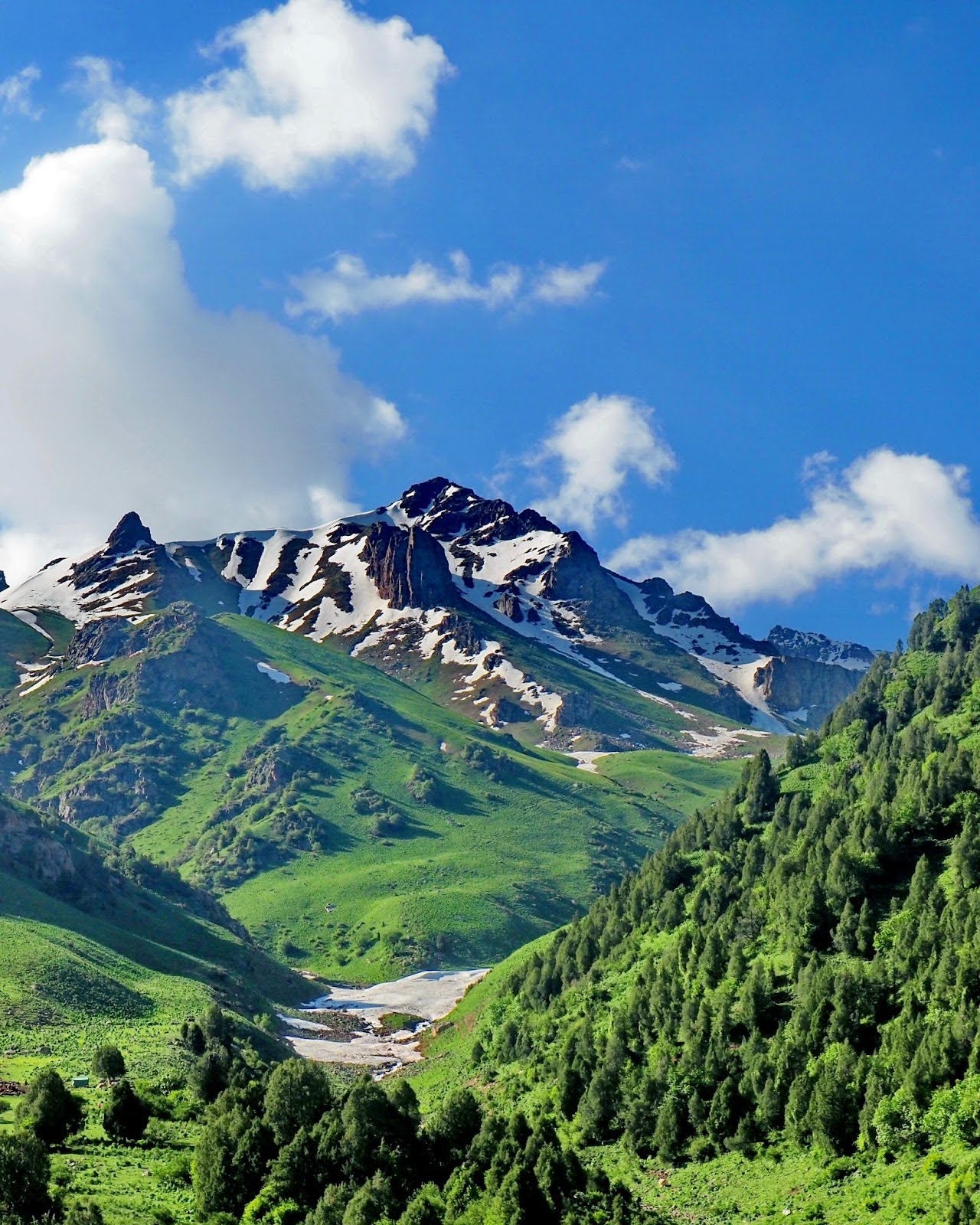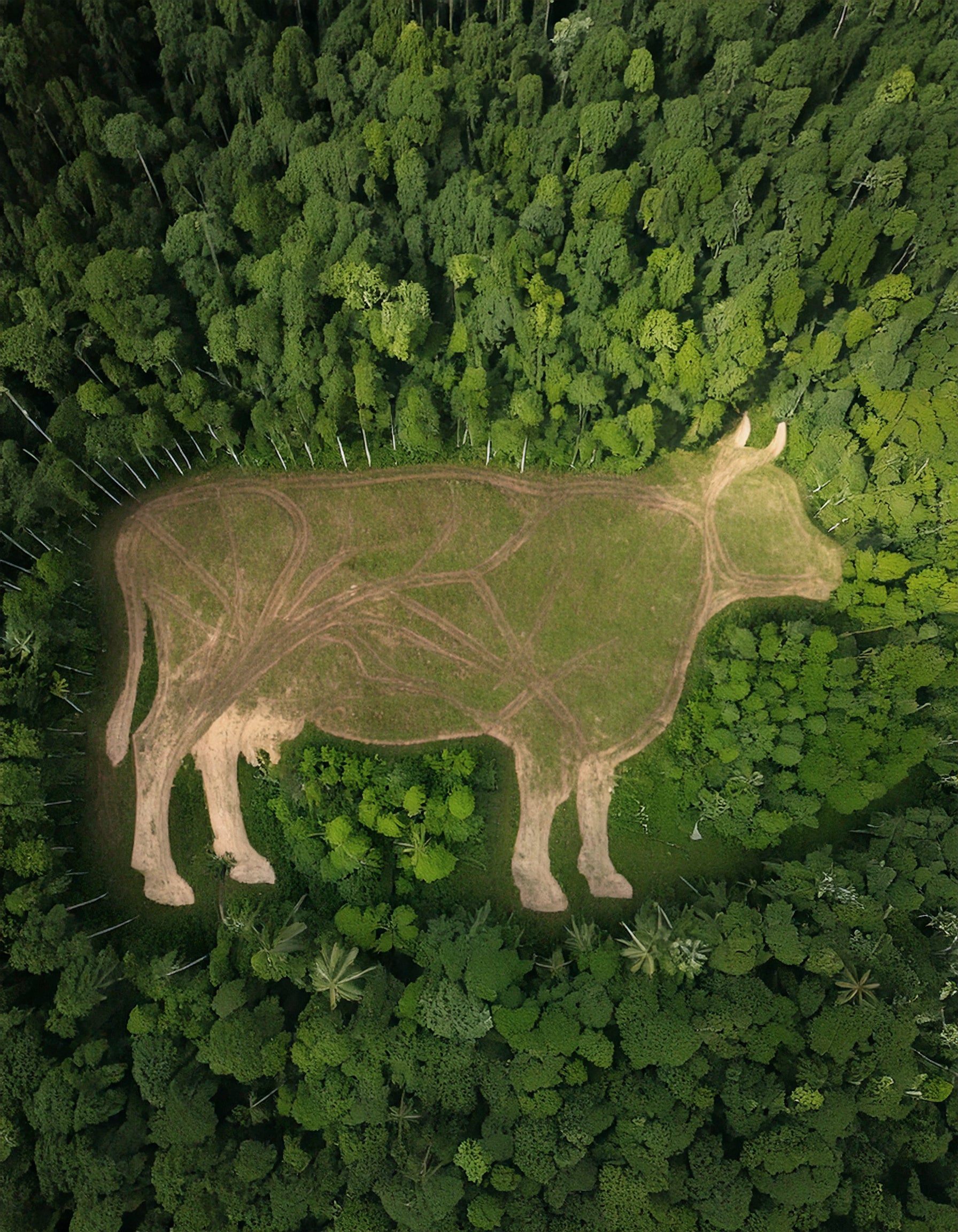An expedition to the rainforests of Sierra Leone earlier this year yielded several major discoveries. Pierre A. Mvogo Ndongo, a lecturer and researcher from the Department of Management of Aquatic Ecosystems, Institut des Sciences Halieutiques, of the University of Douala in Cameroon, traveled to Sierra Leone, in West Africa, in search of the Sierra Leone crab, which hasn’t had a confirmed sighting since 1955, and is one of Re:wild’s 25 most wanted lost species. During three weeks surveying different provinces, not only did he rediscover the Sierra Leone crab (Afrithelphusa leonensis), but he also found a species of freshwater crab lost to science since 1796, and discovered two crab species previously unknown to science.
“It was not easy,” said Mvogo Ndongo, who is also one of only three experts in the world capable of identifying rare West African freshwater crabs. “This trip was very very difficult. You have to be psychologically strong. But I was very determined.”
West African freshwater crabs are a little-studied group, which has made it difficult for conservationists to determine whether species like the Sierra Leone crab and Afzelius’s crab were now extinct, or if they still survived in remote areas. Both of the lost species found by Mvogo Ndongo on the expedition are land-living crabs that live in burrows on the rainforest floor, often far from any permanent water sources. These unusual crabs have specially adapted lung-type structures that allow them to breathe air, and some of their close relatives elsewhere in West Africa can even climb trees, another unique behavior among freshwater crabs.
Mvogo Ndongo’s search took him to the northern, southern and southeastern provinces of Sierra Leone and lasted for 23 days from mid-January to early February 2021 during the dry season when access to remote forest sites is slightly easier. He interviewed local community members, asking if they had ever seen crabs in the forest that walk on land. His interviews initially led to many false leads, since the common river and stream crabs in Sierra Leone do occasionally leave the water. He eventually changed tactics and began asking people from local communities if they had seen forest crabs that only live on land well away from permanent water.
By chance he met two young men in the Moyamba District and described to them the vibrant colors and unique behaviors of the crabs. One of the young men said that he had seen a crab that matched the description of Afzelius’s crab and he led Mvogo Ndongo to a farm on the edge of a humid rain forest. Three days later, Mvogo Ndongo found a small crab living in a burrow far from the nearest water source. The crab, which had a purplish body and orange legs, matched the description of one of the expedition’s target species, Afzelius’s crab, which had not had a recorded sighting in 225 years. Mvogo Ndongo and his team found a number of other Afzelius’s crabs at the same site, indicating that, at least in that location, there was a seemingly healthy population.
Mvogo Ndongo’s jubilation at finding the long-lost crab was also met with some trepidation about its future. Although the forest in the Moyamba District where it was found was still largely intact, there was a lot of agricultural encroachment at the margins that is leading to deforestation and habitat destruction.
On the very last leg of the expedition, and only a day after rediscovering Afzelius’s crab, Mvogo Ndongo traveled to the forested Sugar Loaf Mountain, just south of Freetown, in a last attempt to find the Sierra Leone crab. It was the last of nine different areas he searched during the expedition, and time was running out because of an impending lockdown to slow the spread of COVID-19, leaving him little time to complete his search.
“In the four days searching the dense forests on Sugar Loaf Mountain, I was able to find six specimens of the Sierra Leone crab because I was able to recruit local people to go into the forest and search with me,” said Mvogo Ndongo. “When I found the Sierra Leone crab, I was very very happy. This was after almost three weeks of searching for lost species.”
After receiving permission from local chiefs and the park manager to search within the Western Area National Park, he traveled to the park’s Guma Lake. He eventually widened his search to the vast forest beyond Guma Lake based on a tip from a member of the local community who said there was a land-living crab seen in an area about a three-hour-walk from the lake.
Acting on the information, Mvogo Ndongo shifted his search and found crabs deep in the forest, far from any developed areas. The Sierra Leone crabs were living in burrows that were so deep that Mvogo Ndongo and his researchers had to carefully excavate some burrows using a pick and a machete, without harming the crabs. Mvogo Ndongo and his team cleaned the dirt and soil covering the crabs’ bodies to reveal brightly-colored crustaceans that matched the Sierra Leone crab’s description, and photographed them, because they were the first living specimens seen since 1955.
Male Sierra Leone crabs have pinkish-purple claws and orange legs. Female Sierra Leone crabs have bodies that are more purple with mottled orange-yellow legs.
The rediscovery of the Sierra Leone crab, Afzelius’s crab, and two other new species of freshwater crabs has helped conservationists learn more about distribution and ecology of these species, which are all important for assessing their risk of extinction. But the habitats of both species are under threat from forest destruction due to agriculture and to firewood collection, which could jeopardize their long-term survival.
“We’re optimistic that we found at least one healthy population of each lost species,” said Neil Cumberlidge, a researcher and biology Professor at Northern Michigan University who worked with Mvogo Ndongo on the expedition. “Now we have to gather more information about the species’ ecology, population size, and behavior. We plan to follow this expedition up with on-the-ground conservation of these threatened species.”
The expedition team is planning to work with the International Union for Conservation of Nature (IUCN) Freshwater Crab Specialist Group to reassess the species for the Red List of Threatened Species, which will provide the basis for developing species-specific action plans to protect these crabs. Those conservation action plans typically include interventions like habitat protection, threat reduction, breeding programs, and education, all aimed at restoring and protecting depleted wild populations.
“It’s amazing that this expedition found two lost species and two species new to science,” said Barney Long, senior director of conservation strategies with Re:wild. “The Sierra Leone crab is the eighth of our 25 most wanted species to be rediscovered, and it was a difficult search for the team, but their persistence was key to its success like all lost species searches.”The Search for Lost Species is the largest-ever quest to find and conserve wildlife lost to science for at least a decade. Re:wild has confirmed the rediscovery of seven other species from its 25 most wanted lost species list: Jackson’s climbing salamander in Guatemala, both the Wallace’s giant bee and the velvet pitcher plant in Indonesia, the silver-backed chevrotain in Vietnam, the Somali sengi in Djibouti, the Voeltzkow’s chameleon in Madagascar, and the Fernandina giant tortoise in the Galápagos.
# # #
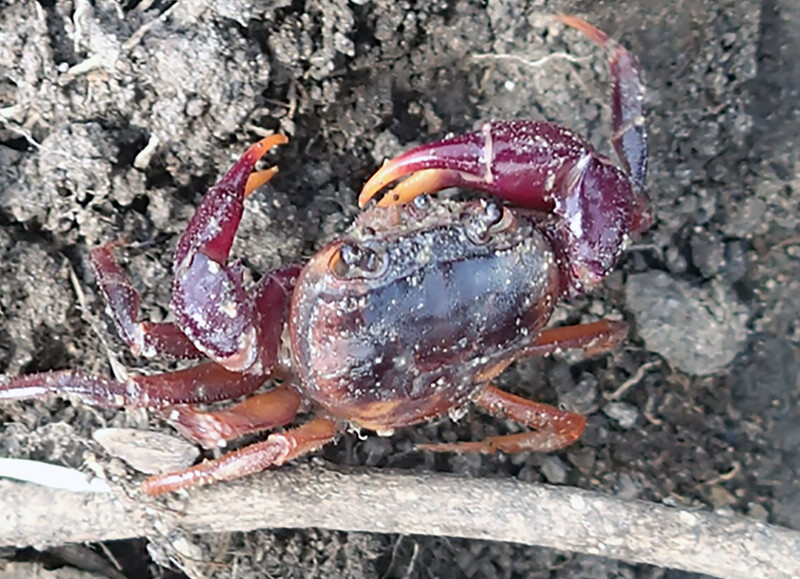
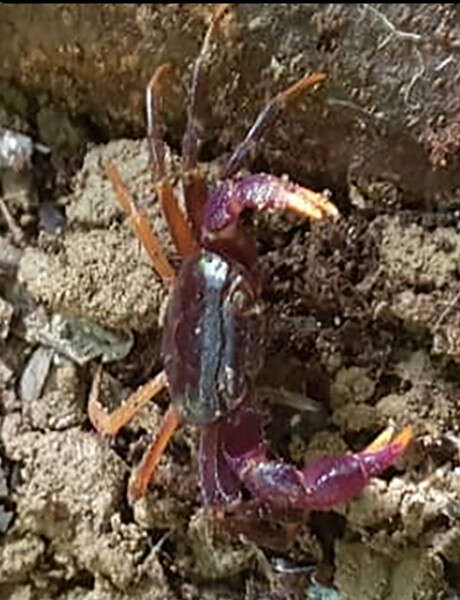
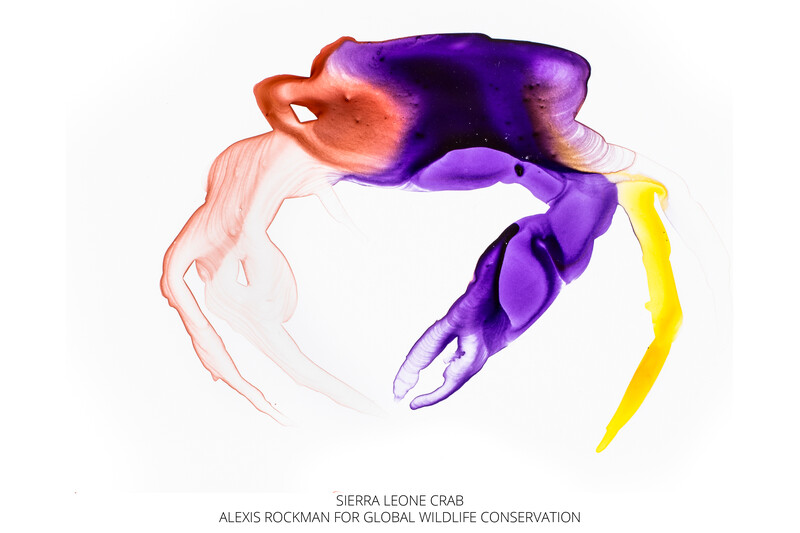

Devin Murphy
Writer
Devin Murphy is Re:wilds’s senior communications specialist and helps Re:wild and its partners tell stories about the work they do to protect wildlife and wildlands around the planet. Her favorite stories about conservation include fascinating and little-known species and the dedicated humans protecting them.
